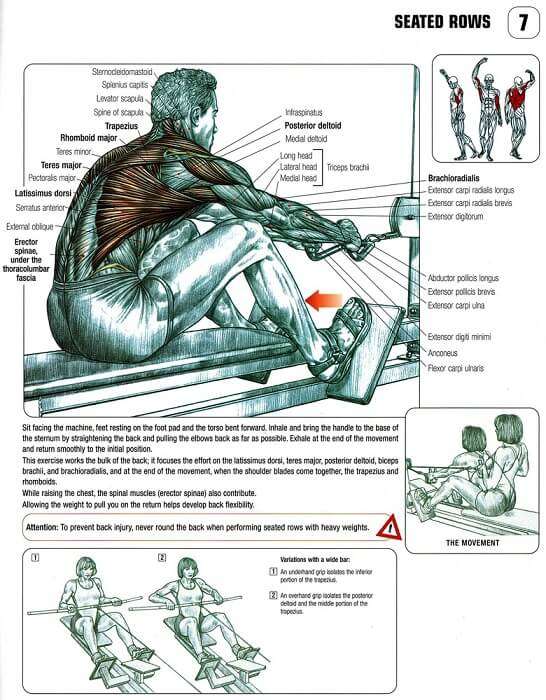Contents
A seated row is an exercise where the purpose is to strengthen the muscles that draw the rower’s arms toward the body (latissimus dorsi) as well as those that retract the scapulae (trapezius and rhomboids) and those that support the spine (erector spinae).
When done on a rowing machine, rowing also exercises muscles that extend and support the legs (quadriceps and thigh muscles).
In all cases, the abdominal and lower back muscles must be used in order to support the body and prevent back injury.
Sit facing the machines, feet resting on the foot pad and the torso bent forward.
Inhale and bring the handle to the bar of the sternum by straightening the back and pulling the elbows back as far as possible towards your lower abs for close grip. For wide grip pull towards your upper abs or sternum.
Exhale at the end of the movement and return smoothly to the initial position. Allowing the weight to pull you on the return helps develop back flexibility.
Variation with the wide bar:

Well, it depends on your goals. If your focusing on targeting your lower lats, go with the close-grip handle (although many believe that it’s middle back exercise).
If you want to emphasizes the upper lats, and traps for a V-taper, then choose the wide grip bar.
For the wide grip handle, your arms are parallel to the floor and elbows are out to the sides more, which hits more of the outer lats creating a straight line across your rhomboids, middle traps, and other back muscles.
Compare to the close grip row, your elbows are close to the sides and this hits more of the lower lats.
When doing the seated cable row, you will often see people using too much weight, leaning forward with their whole body, as if it was another exercise! Your no longer isolating the back with this motion.
To isolated the back effectively make sure not to lean forward or backward. You want to stabilize your upper body and engage your core.
To prevent back injuries, never round the back when performing seated rows with heavy weights.